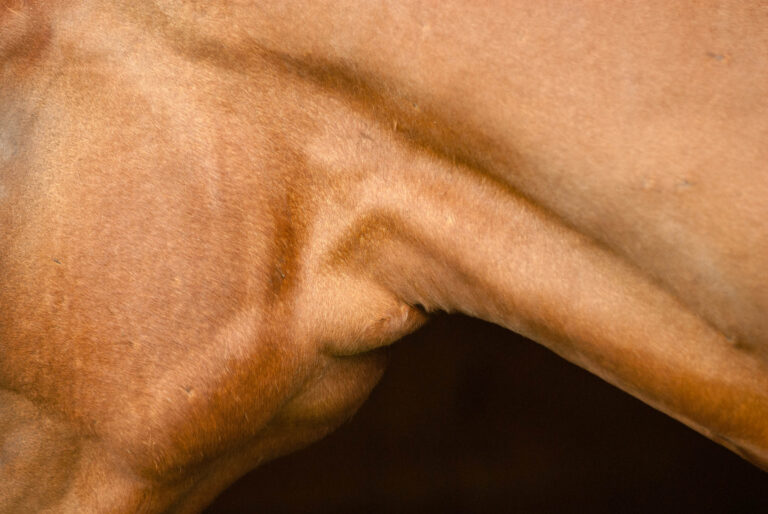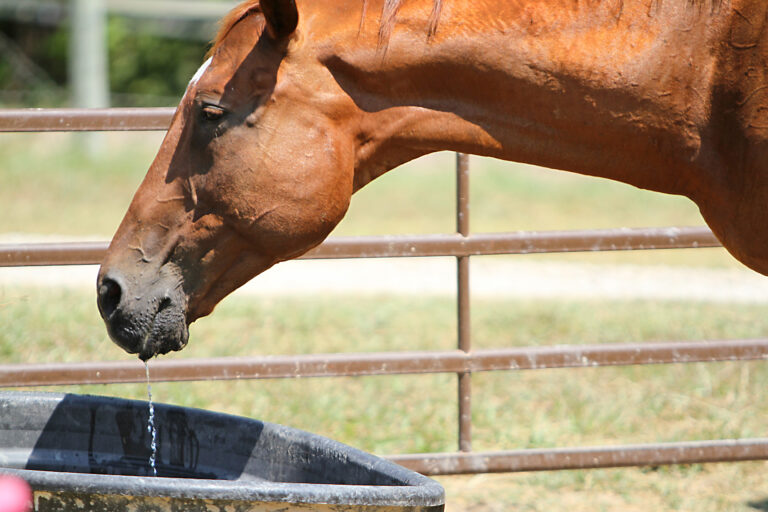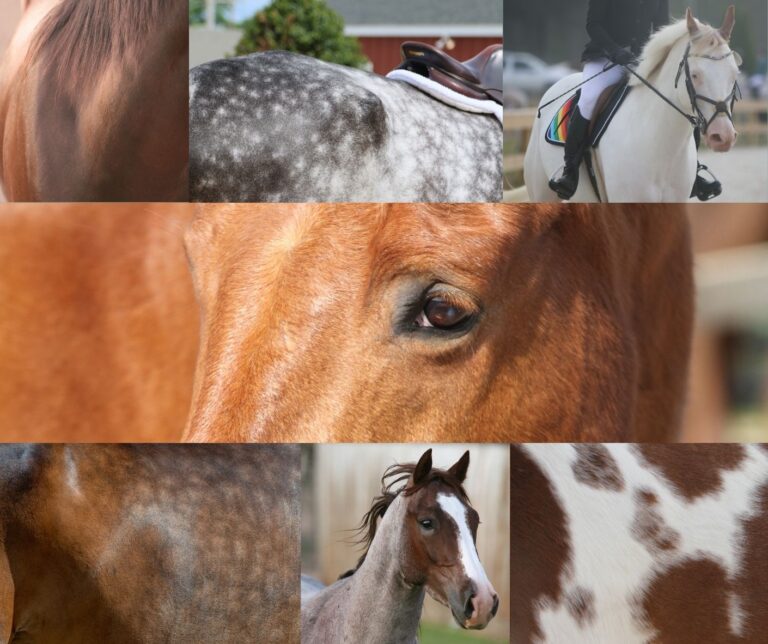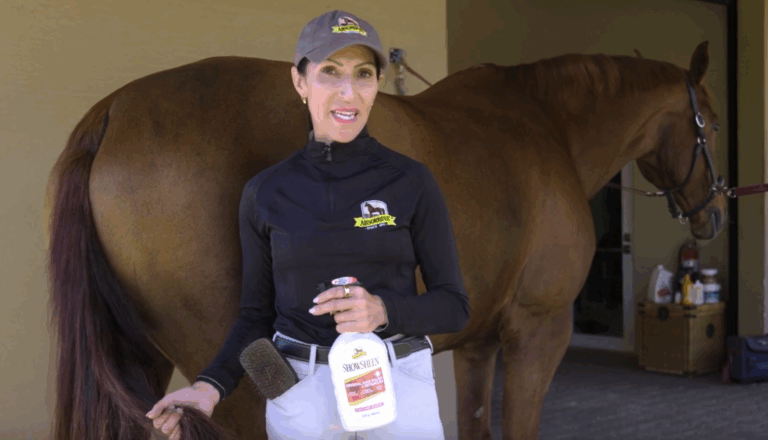A horse’s respiratory rate is the number of breaths he takes per minute. As with all vital signs, knowing your horse’s resting respiration, or breathing rate, will help you determine when it’s not normal. An elevated respiration can indicate that your horse is stressed, in pain or suffering from a respiratory disease. Recognizing a potential issue allows you to address it quickly. The average respiration for adult horses at rest is 8–12 breaths per minute (but depending on the horse can vary from 8 to 24). A newborn’s rate can be as high as 60–80 breaths per minute, but should stabilize to 20–40 breaths per minute a couple of hours after birth.
Some horses can be outside these averages, though, so you want to determine your horse’s normal rate. If you know what’s a normal baseline for your horse, you will recognize when there’s an actual change—signaling that something is different today than yesterday and possibly could be wrong with your horse.
What You’ll Need
Stethoscope
Watch with a second hand or phone with a timer
How to Measure Respiration
Before you take your horse’s respiration, make sure he isn’t moving around or nervous. When I’m doing a physical exam I always take the respiration first, in the horse’s stall, before I even put a halter on him. If he is standing in his stall relaxed, it’s much easier to get an idea of what’s true breath, versus what’s just movement. If he calls to a buddy, that will also disturb his respiration.
When measuring respiration, I use a stethoscope and listen to the trachea, which I find easier than listening to the lungs. The trachea is right under the skin and you can hear the air going through quite easily. The trachea is located midway between the throatlatch area and the chest, on the bottom of the neck and a little to the right side. It’s a firm structure so if you palpate carefully you can feel the tracheal rings—hard bands or rings, which are the cartilage rings that support the horse’s trachea. You can put your stethoscope almost anywhere on the bottom of the neck and you will be able to hear the horse breathing—the easier it is to hear, the closer you are to the trachea. It usually just takes a little practice. I use the second hand on my watch and count how many times the horse takes a breath in 15 seconds and then multiply by four to get the respiration.
If you don’t have a stethoscope, you can measure the respiration by watching your horse’s rib cage or flank, counting how many times his rib cage rises and falls within 15 seconds. Some people watch the horse’s nostril, but I find that difficult and inaccurate because horses are always moving around or sniffing and you can easily be confused by what’s a real breath and what’s not.
Take his respiration 3 times to get an average. If you notice that it’s elevated, that could be a sign of trouble. Check your horse’s other vital signs, such as temperature and heart rate and assess for other clinical symptoms such as coughing or nasal discharge. With this information, call your veterinarian to discuss possible further action.
During exercise, a horse’s respiration can increase significantly. Galloping horses can take over 150 breaths per minute. Depending on a horse’s fitness level and environmental temperature, the respiration rate should decrease after exercise in a short period of time. Within five to ten minutes a horse’s respiration rate should decrease below 60–80 breaths per minute, but can remain above his normal resting rate for up to an hour after exercise. If a horse’s respiration rate is not decreasing normally after exercise, it could be a sign of overheating.
Abnormal Respiration
If a horse is stressed or in pain, he will typically have an elevated respiration. For example, horses suffering from subsolar abscesses or who are tying up—both painful conditions—often have higher respirations. Or sometimes the only clue of colic in a stoic horse is heavy breathing with a flared nostril.
Knowing your horse’s respiration rate is especially helpful for some of the inflammatory airway diseases, such as heaves, now also known as recurrent airway obstruction or asthma. Heaves is an inflammation or hypersensitivity that horses will develop later in life, so if you notice an increased respiration rate as your horse starts to get older, that’s the first indication that he may be developing heaves. Later in the disease process, horses will start to cough but if you can help diagnose it early by noticing the increased respiration in your horse, your veterinarian can treat the disease and mitigate its effects.
Greg Schmid, DVM is a 2013 graduate of the College of Veterinary Medicine at The Ohio State University and has been a veterinarian at Columbia Equine Hospital in Gresham, Oregon since 2016. Dr. Schmid was an active U.S. Pony Club member throughout his youth, competed in upper-level eventing and spent time as a working student for eventers on the East Coast. Dr. Schmid completed an internship at B.W. Furlong & Associates, a prominent equine practice in central New Jersey. Afterward, he continued his career as a sporthorse veterinarian with J.R. Steele & Associates working with hunters and jumpers in the northeast in the summer and Wellington, Florida, during the winter. He has a strong interest in lameness exams, diagnostic imaging and farrier science, but he mostly enjoys helping owners with their horses in any way possible. When not tending to clients, Dr. Schmid enjoys skiing and hiking.











